How to Write a Book Title Correctly: A Step-by-Step Guide + Examples
Few things will make or break your book like its title.
As a writing coach, ghostwriter, and author who's written several books and helped over 130 clients bring theirs to life, I’ve seen time and time again how a weak or confusing title can derail an otherwise great manuscript. And the data backs it up: more than 80% of readers admit they decide whether to buy a book based on its title alone.
That’s why your book’s title isn’t just a creative decision—it’s a strategic one. Whether you're writing to build a personal brand, land speaking gigs, grow a business, or simply reach more readers, the right title does the heavy lifting. It sparks curiosity, promises value, and positions your book in the market—all in just a few words.
In this article, I’ll walk you through a step-by-step process I use with my clients to craft book titles that not only resonate, but sell. You’ll learn how to avoid common pitfalls, test your title with real readers, and choose powerful words that make your book impossible to ignore.
Let’s get it right—starting now.
Why Book Titles Matter More Than Ever
We live in a world of short attention spans and endless choices. Whether someone is scrolling through Amazon, browsing a bookstore, or looking for their next nonfiction read on Google, your book title is the first filter. It’s your 3-second pitch.
If it doesn’t grab attention, the rest doesn’t matter.
A strong title doesn’t just look good on a cover—it acts as your book’s frontline marketing tool. It speaks directly to your target audience, hints at the transformation you’re offering, and sets expectations around tone and content.
Here’s what the right book title can do:
-
Capture attention in a crowded space
-
Convey a clear benefit or emotional hook
-
Build trust by sounding credible and aligned with your topic
-
Increase discoverability through keyword-rich phrasing (especially on Amazon and Google)
-
Spark word-of-mouth because it’s easy to remember and share
Compare that to a vague or weak title, and you’ll quickly see how much is at stake. Even if you’ve written an extraordinary book, a flat or confusing title can keep it from ever being read.
That’s why writing your book’s title isn’t something to rush or delegate without thought. It deserves the same strategic care as the writing itself—if not more.
Step 1: Understand the Structure of a Book Title
Before you start brainstorming book title ideas, you need to understand what makes a title work structurally—especially for nonfiction. A great title isn’t just catchy; it’s clear, strategic, and aligned with reader expectations.
Most successful nonfiction titles follow a proven formula:
-
Title: 2 to 5 words that hook attention
-
Subtitle: 5 to 10 words that clarify the promise or outcome
Each element plays a different role. The title is your hook—it creates curiosity or emotional pull. The subtitle explains what the book is about and why the reader should care.
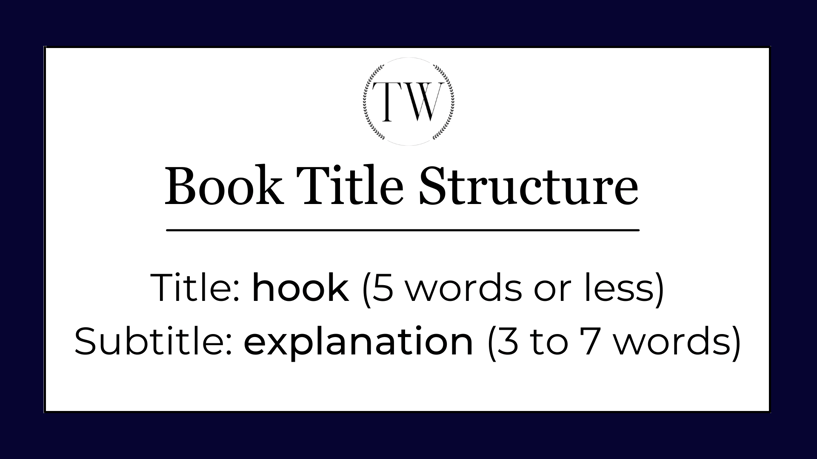
Examples of great book title structures:
Atomic Habits: Tiny Changes, Remarkable Results
Never Split the Difference: Negotiating As If Your Life Depended On It
The Subtle Art of Not Giving a Fck*: A Counterintuitive Approach to Living a Good Life
Dare to Lead: Brave Work. Tough Conversations. Whole Hearts.
How to Win Friends and Influence People: [No subtitle, because the title says it all]
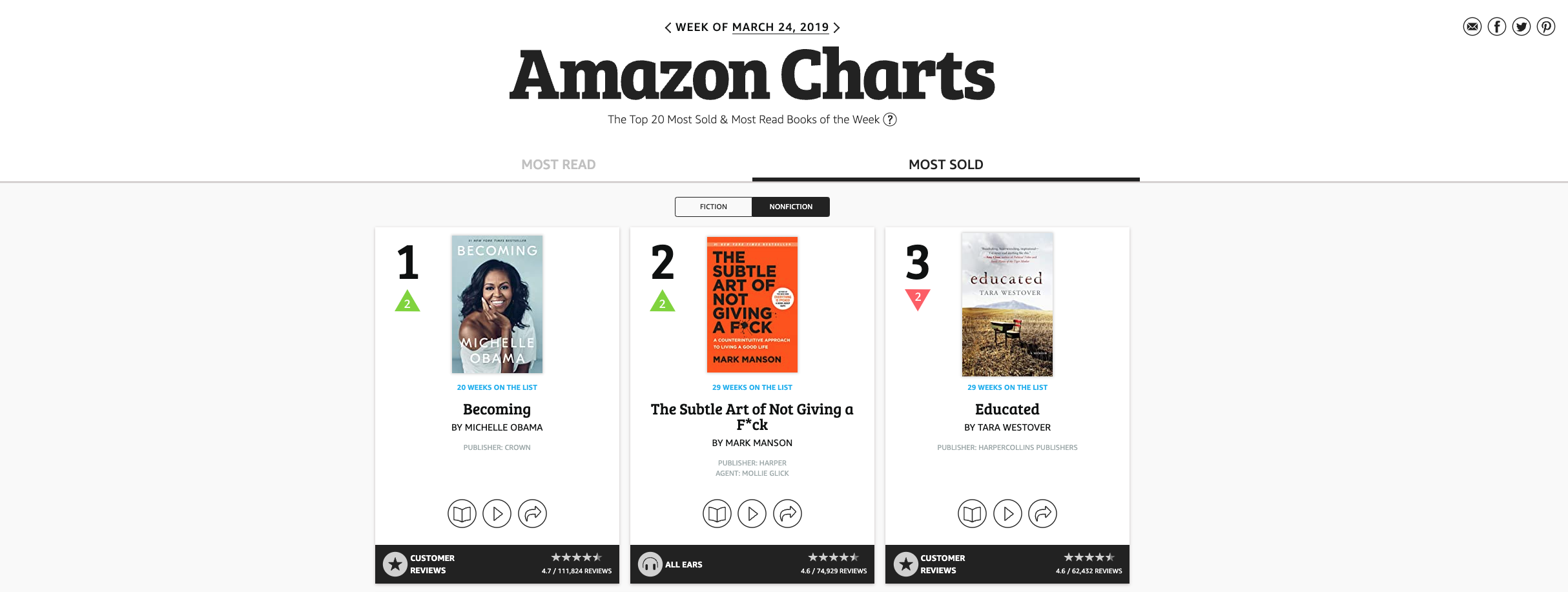
Notice how each book title grabs attention while the subtitle provides clarity or benefit. This is the structure you want to aim for—concise, compelling, and conversion-driven.
Even with shorter titles, every word should be doing work. And in some cases, a well-crafted chapter title or working title from your early drafts may evolve into the final title.
If you're writing a nonfiction book, a title that balances creativity and clarity will perform far better than one that tries to be clever but vague.
Later in this guide, I’ll show you how to test different versions of your working title with your target audience—but for now, focus on structuring the best possible version.
Step 2: Clarify Your Book’s Central Message
If you can’t explain what your book is about in a single sentence, you’re not ready to title it.
One of the most common mistakes I see as a writing coach is authors trying to title a book that isn’t conceptually clear yet. The result? Vague, forgettable, or misleading titles that confuse readers instead of attracting them.

In Trivium Writing’s Architecture of Writing methodology, we call this central idea your thesis—the unifying message that ties your chapters, stories, and insights together. Mortimer J. Adler referred to it as the book’s "unity" in How to Read a Book, and it’s still one of the most powerful concepts in nonfiction writing.
Here’s a simple exercise:
Write one clear, specific sentence that explains your book’s purpose or big idea.
If you can’t do that yet, your title isn’t ready.
For example:
-
“This book teaches professionals how to build a personal brand by writing online.”
-
“This book helps new managers lead with emotional intelligence, not fear.”
-
“This book breaks down the science of habit formation into small, actionable steps.”
When that message is clear, it becomes much easier to write a book title that reflects it. The title becomes an extension of your thesis—expressed in a few well-chosen words.
If your manuscript feels scattered or your book’s title feels disconnected from the content, this is often the missing link. Clarity of purpose leads to clarity in marketing, branding, and reader engagement.
Need help articulating your thesis? That’s one of the first things I help clients with during our coaching sessions—because without it, every decision from outline to title to publishing strategy becomes harder.
Step 3: Define the Right Tone and Style for Your Book’s Title
Even if your book’s content is outstanding, the wrong tone in the title can cost you readers.
Your book title sets the emotional expectation for what’s inside. Is your book bold? Friendly? Urgent? Intellectual? Readers will decide—consciously or not—whether to trust your voice based on just a few words on the cover.
That’s why your tone and style must match your audience’s mindset.
Start by choosing a tone:
-
Confident – implies authority or boldness (Unfuk Yourself*)
-
Joyful – light, fun, or inspiring (You Are a Badass)
-
Urgent – conveys time sensitivity or high stakes (Never Split the Difference)
-
Analytical – suggests intellectual rigor (Thinking, Fast and Slow)
-
Elegant – implies wisdom or sophistication (The Art of Possibility)
-
Negative – works well for pain-based positioning (The Subtle Art of Not Giving a Fck*)
Then decide on the style:
-
Formal – professional, academic, often used in policy, law, or thought leadership
-
Informal – conversational, accessible, typically better for self-help, coaching, lifestyle
-
Neutral – a safe middle ground, common in business or general nonfiction
Compare these two titles about justice:
Justice: What’s the Right Thing to Do? — informal, approachable, curious
The Authority of the Court and the Perils of Politics — formal, institutional, serious
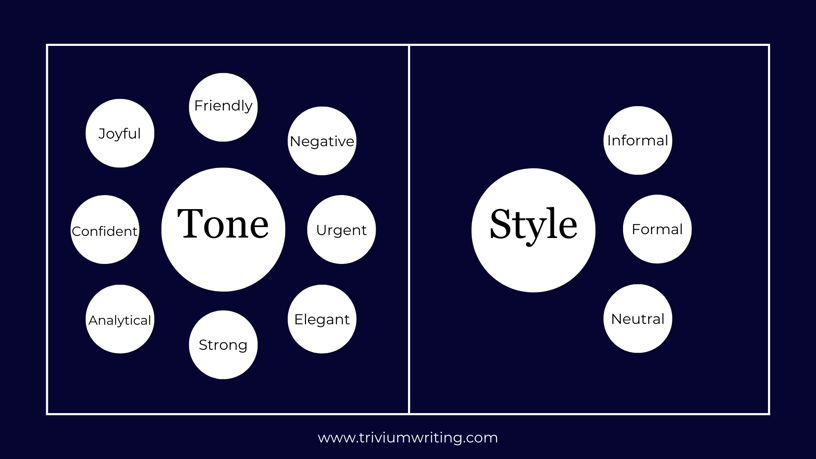
Both titles speak to a similar topic, but they’re clearly written for different audiences. One is for the general public; the other, for legal scholars or policymakers.
This decision isn’t just about style—it’s about strategy. A misaligned tone can signal the wrong genre, confuse your target audience, or reduce trust. A well-aligned tone, on the other hand, instantly makes readers feel, “This book is for me.”
When I work with clients, we don’t just “choose words” for the title—we reverse-engineer from the emotional impact we want the title to have.
Step 4: Use Powerful Visual Language
Great book titles don’t just inform—they paint a picture. When you use visual language, your title creates a mental image that sticks. That image becomes the emotional anchor readers associate with your book, which can be incredibly powerful.

Here’s the test:
If your book’s title were turned into a movie poster, would it have a strong visual identity?
Visual titles are often more memorable because the human brain processes images faster than words. That’s why titles like Atomic Habits, Can’t Hurt Me, and The 5 AM Club feel sticky—they evoke clear pictures, not just ideas.
Where do these visual ideas come from?

Think of the broad categories that shape our world. These categories are gold mines for generating strong book title ideas:
-
Nature – tree, wave, mountain, fire, storm
-
People – warrior, mother, leader, child
-
Animals – wolf, fox, lion, eagle
-
Abstractions – truth, chaos, legacy, freedom
-
Domains – psychology, architecture, business, history
-
Roles – king, teacher, creator, outsider
-
Objects – mirror, compass, machine, hammer
-
Shapes – circle, line, triangle, spiral
Each category carries tone, emotion, and association. For example:
-
A title with nature imagery (like Into the Wild) might feel spiritual or organic.
-
A title with object imagery (The Tipping Point) feels concrete and conceptual.
-
A title with abstraction (Outliers) feels intellectual and layered.
Here's how to apply this:
-
Brainstorm 5–10 images tied to your book’s core message
-
Test which ones evoke the strongest reaction
-
Combine those images with powerful verbs or adjectives (we’ll do that in the next step)
Example: Instead of titling your book Mastering Your Mindset, you could create a visual metaphor like The Mental Gym or Train Your Inner Wolf. Each suggests transformation through imagery.
Visual words don’t just help with branding—they boost SEO. A strong, original image in your book's title helps it stand out in search results and social shares. It also makes it easier for readers to recall your title days or weeks later.
If you want your book to travel far, make it visual.
Step 5: Choose Strong, Visual Words That Spark Curiosity
Now that you’ve explored visual themes and imagery, it’s time to get tactical. The words you choose for your book title matter—a lot. Not all words are created equal, and some have much more power to attract, persuade, and stick in the reader’s mind.
When I coach clients through naming their books, this is where we often spend the most time—testing word combinations that strike the perfect balance between clarity, energy, and originality.
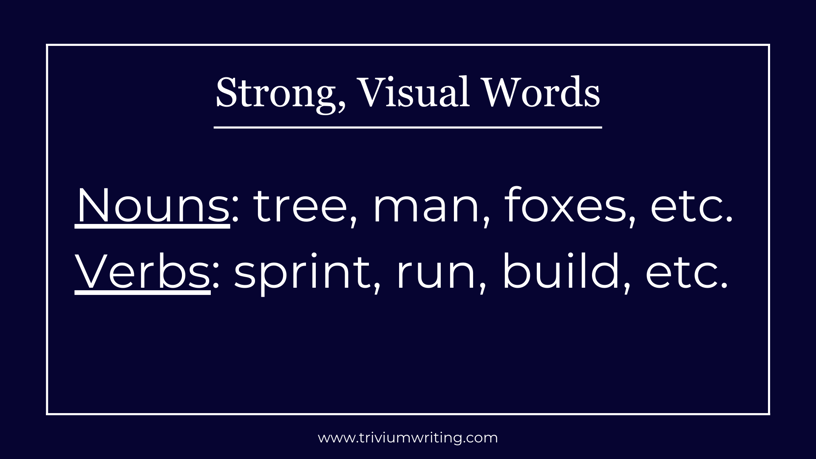
Focus on the parts of speech that carry weight:
-
Nouns: Tree, Habit, Power, Warrior, Creator
-
Verbs: Build, Break, Lead, Burn, Win, Chase
-
Adjectives: Atomic, Subtle, Brutal, Magnetic, Enduring
-
Adverbs: Quietly, Relentlessly, Boldly (used sparingly in titles)
Why nouns and verbs matter most:
Nouns create images. Verbs create action. Titles that combine the two are often the most effective, especially in nonfiction.
For example:
-
Build to Last (Verb + Purpose)
-
The Making of an Enduring Business (Verb + Adjective + Noun)
-
Quiet: The Power of Introverts in a World That Can’t Stop Talking (Adjective + Noun + Contrast)
Even a seemingly simple phrase like Atomic Habits is loaded with intentionality:
-
“Atomic” = small, explosive, powerful
-
“Habits” = clear subject, tied to transformation
Here’s a tip I give clients:
Brainstorm 20 words—10 nouns, 5 verbs, 5 adjectives—that reflect your book’s message or emotional tone. Then start mixing and matching. Let your working title evolve organically.
Watch out for filler and fluff:
Avoid weak words like “stuff,” “thing,” or “nice.” They dilute your title’s energy. Instead, opt for words that pack punch or paint a picture. If a word doesn’t earn its place, cut it.
This is also the point where keyword research comes in. Tools like Google Keyword Planner or Ubersuggest can help you find high-volume, relevant phrases to naturally incorporate into your book title or subtitle—boosting discoverability without sacrificing creativity.
SEO Tip: Titles like How to Write a Book Title That Sells include exact-match keywords people are already searching for. That helps you show up in Google and Amazon search.
Whether you’re going for a short title, a perfect title, or even just testing a few solid title options, remember: strong words sell. The sharper your language, the clearer your promise—and the better your chances of turning browsers into buyers.
Step 6: Test Your Book Title With Your Target Market
You are not your audience.
This is one of the hardest lessons for authors to accept. You might love your title. Your writing group might love it. But if your target readers don’t connect with it—or worse, misunderstand it—then it’s not the right title.
Testing your book title ideas with real readers helps you remove bias and ground your decision in market response, not ego. It’s also how bestselling authors avoid costly mistakes before going to print.

Here’s how to run an effective title test:
-
Build a reader avatar — Who is your book for? Be specific. (e.g. new managers in tech, wellness-conscious women over 40, aspiring entrepreneurs)
-
Create 3–5 strong title options — These should reflect your thesis, tone, and visual language from earlier steps.
-
Ask open-ended questions first — Don’t lead with “Which one do you like best?” Instead, ask:
-
“What does this title make you think the book is about?”
-
“What emotions come up when you read it?”
-
“Would you pick this book up in a bookstore or online?”
-
-
Follow up with ranking or A/B testing — Once you’ve gathered initial reactions, run polls to see which title performs best.
Where to find your test audience:
-
Beta readers from your email list or social media
-
Writing or reading communities (Facebook groups, Reddit, Goodreads)
-
LinkedIn polls targeting your professional audience
-
1-on-1 calls with ideal readers or clients
Pro tip: Keep the test blind. Don’t explain the book first. You’re testing first impressions, just like readers get in the real world.
What you’re looking for is consistency. If three or more people say a title is confusing or evokes the wrong feeling, take that seriously. If most people gravitate toward one title over the others, that’s your signal.
I’ve guided dozens of clients through this exact process. In some cases, the winning title was one they hadn’t even liked at first. In others, we uncovered small tweaks—changing a verb, reordering a phrase—that made all the difference.
If you’re writing a nonfiction book to reach a specific audience, it’s critical that your title speaks their language, not yours.
Step 7: Refine and Finalize Your Book’s Title
Once you’ve gathered feedback from your target audience, it’s time to make a decision. This is where strategy, instinct, and clarity all come together.
No title will be perfect. There will always be differing opinions. But if you've followed the process—clarified your message, chosen a compelling tone, crafted visual language, and tested with readers—you’ll be choosing from a shortlist of strong options, not guesses.

Here’s how to make the final call:
-
Look for recurring feedback — If multiple readers say the title is unclear, unmemorable, or emotionally flat, that’s a red flag. Don’t ignore the patterns.
-
Don’t chase perfection — Your title doesn’t need to be universally loved. It needs to resonate deeply with the right people.
-
Prioritize clarity over cleverness — Especially in nonfiction, clarity sells more books than wit.
-
Check availability — Make sure your final title isn’t already used (or trademarked) and that the domain and social handles are available if relevant to your brand.
If your top pick still isn’t landing well, don’t be afraid to tweak.
You can adjust:
-
The imagery (e.g. The Mental Gym → Train Your Inner Warrior)
-
The tone (e.g. Escape the 9–5 → Build a Business You Don’t Want to Escape From)
-
The subtitle (e.g. Quiet Power → The Power of Introverts in a World That Can’t Stop Talking)
Rinse and repeat the testing process as needed. Sometimes, one small change unlocks everything.
Why this step matters:
Publishing a book is an investment—of time, money, and energy. Your book’s title is the most visible part of that investment. It’s what will show up in online searches, Amazon listings, podcasts, interviews, social posts, and public conversations.
Make sure it’s a title you feel proud of and one that pulls readers in.
If you’ve followed this process carefully, you’ll be in the 1% of authors who don’t just have a good book—they have a great book title to match.
Common Mistakes to Avoid When Naming Your Book
Crafting a compelling book title is a skill—and like any skill, it’s easy to get wrong if you don’t know what to watch out for. Over the years, I’ve seen hundreds of titles fall flat for the same predictable reasons.
Below are the most common pitfalls authors make when choosing a book’s title, along with clear guidance on how to avoid them.
Mistake 1: Being Too Vague
A title like The Journey or Growth might sound poetic or profound to you—but to readers, it’s unclear and forgettable. A good book title doesn’t just sound nice. It signals value and substance.
What to do instead: Be specific. Choose words that make the reader think, “That’s for me.” Include clear hints about the book’s topic or promise. For example, The 5 Love Languages immediately tells you what the book offers.
Mistake 2: Overcomplicating the Title
Authors sometimes try to pack too much into one line. The result? A confusing or bloated title that feels more like a sentence than a headline.
What to do instead: Keep your title short and strong—ideally five words or fewer—and use the subtitle to clarify the outcome or benefit. This balance works especially well for nonfiction. Think: Deep Work: Rules for Focused Success in a Distracted World.
Mistake 3: Ignoring Genre Conventions
Your book title has to match the expectations of your genre. A playful or mysterious title might work for a novel, but not for a leadership book or how-to guide.
What to do instead: Study top-selling nonfiction titles in your category. Identify patterns in tone, structure, and word choice. If you're writing for business professionals or entrepreneurs, your title should communicate results, credibility, or transformation—not confusion.
Mistake 4: Forgetting SEO and Discoverability
Your title isn’t just for your book cover—it also needs to perform well on Amazon, Google, and podcast directories. If you’re not using terms people search for, your book may never reach its audience.
What to do instead: Use tools like Google Keyword Planner or even a book title generator to explore high-traffic search terms. Incorporate these phrases naturally into your subtitle, especially if you're covering a topic that has high search demand.
Mistake 5: Using Jargon or Insider Language
Specialist language might feel impressive, but it often excludes the very readers you want to attract. This is especially risky if your book is meant for a general or beginner audience.
What to do instead: Use simple, relatable language that anyone can understand—even if your content is advanced. If a technical term is essential to your title, make sure the subtitle explains it clearly.
Mistake 6: Poor Formatting or Style Errors
The way you format your book’s title—from capitalization to punctuation—affects how professional your book appears. Misused quotation marks, incorrect title casing, or inconsistent styling can undermine reader trust.
What to do instead: Follow an established style guide like the Chicago Manual of Style. Know when to italicize, when to use quotation marks, and how to capitalize your chapter titles or subtitles. Proper formatting also helps when referencing titles of books within your own content.
Avoiding these common mistakes gives your working title a stronger foundation. While titling is creative work, it's also strategic. Every word needs to be doing its job—attracting attention, building clarity, and positioning your book for success.
Real-World Examples of Book Titles That Work
One of the best ways to learn how to write a book title that resonates is to study titles that already do. Behind every bestselling nonfiction book is a strategic choice—a carefully crafted title and subtitle designed to capture attention, communicate value, and connect with the right audience.
Let’s break down a few standout examples and what makes them so effective.
1. Atomic Habits: An Easy & Proven Way to Build Good Habits and Break Bad Ones
This title works because it’s both visual and practical.
-
"Atomic" suggests explosive power and small, fundamental units—grabbing attention instantly.
-
The subtitle clearly explains what the reader will get: a simple, effective system for behavior change.
-
This is a classic example of combining strong visual words with a clear promise.
2. The Subtle Art of Not Giving a F*ck: A Counterintuitive Approach to Living a Good Life
This title is successful because it breaks norms while still offering value.
-
The language is bold, irreverent, and immediately polarizing—it stands out in any list or shelf.
-
The subtitle reframes what could seem like a rant into a useful, philosophical take on self-help.
-
This is a great example of tone matching audience: informal, punchy, and no-nonsense.
3. How to Win Friends and Influence People
This title has stood the test of time—and for good reason.
-
It’s simple, direct, and benefits-focused.
-
The use of the verb “win” adds energy, while “influence” speaks to deep psychological needs.
-
It also follows the classic “How to…” formula, which remains one of the most powerful structures for nonfiction titles.
4. Never Split the Difference: Negotiating As If Your Life Depended on It
This is a masterclass in blending drama and utility.
-
The main title defies conventional wisdom—immediately creating intrigue.
-
The subtitle raises the stakes with language like “your life depended on it.”
-
The title speaks directly to the target reader: anyone who negotiates, sells, or leads.
5. Sapiens: A Brief History of Humankind
Here, the title is academic yet accessible.
-
"Sapiens" is a bold, one-word title that feels elevated and universal.
-
The subtitle grounds it: this isn’t a textbook, but a digestible history.
-
It’s a reminder that even intellectual nonfiction can—and should—be positioned for clarity.
6. The 4-Hour Workweek: Escape 9–5, Live Anywhere, and Join the New Rich
This title transformed an entire genre.
-
"The 4-Hour Workweek" is short, memorable, and completely counterintuitive.
-
The subtitle expands the promise to lifestyle, freedom, and wealth—clearly defining the outcome.
-
It also taps into targeted keywords like "escape 9–5," making it highly discoverable online.
Each of these books succeeded not just because of their content, but because their titles and subtitles worked in tandem to capture attention, build curiosity, and signal value.
When you're brainstorming your own book title ideas, don’t just think about what sounds nice—think about what sells. A compelling title reflects clarity of message, deep knowledge of the audience, and the ability to communicate benefits in a few powerful words.
Tools and Resources for Crafting the Perfect Book Title
Coming up with the perfect book title isn’t just about creativity—it’s also about process. The right tools can help you generate fresh ideas, validate market interest, and ensure your title is optimized for search visibility and emotional resonance.
Below are some of the most effective resources I recommend to clients when we’re developing title options together.
1. Book Title Generators
Online tools can be surprisingly useful for sparking ideas, especially if you're feeling stuck or looking for different angles. While they won’t give you a finished product, they can help you find new directions or combinations.
Recommended options:
-
KDP Book Title Generator – Specifically designed for authors publishing on Amazon
-
Portent’s Content Idea Generator – Originally made for blog titles, but adaptable for books
-
Squier Book Title Generator – Offers genre-specific suggestions
These are especially helpful when refining a working title or playing with variations on your theme.
2. Keyword Research Tools
If you want your book to be found in search engines—or on Amazon, which is essentially a search engine for readers—keyword data matters.
Top tools include:
-
Google Keyword Planner – Free and reliable for understanding search volume and related terms
-
Ubersuggest – Helpful for keyword ideas, trends, and basic SEO guidance
-
SEMrush or Ahrefs – Advanced tools for serious keyword and market research
Use these tools to find high-volume phrases your target audience is already looking for. Then, integrate those terms naturally into your subtitle for better visibility.
3. Thesaurus and Word Banks
Sometimes the right word is just out of reach. A good thesaurus can help you level up your language and explore synonyms with stronger imagery, tone, or emotional appeal.
Useful resources:
-
Thesaurus.com – A staple for quick lookups
-
Merriam-Webster’s Dictionary and Thesaurus – Offers usage examples and nuances
-
Writer’s word banks – Lists of power verbs, sensory words, emotional triggers, etc.
If you’ve already found a good concept but it sounds bland or overused, a few stronger visual words can make a big difference.
4. Writing and Publishing Communities
Sometimes, the best feedback comes from real writers and readers. Engaging with online communities can help you test titles, get reactions, and hear language trends directly from your audience.
Communities to consider:
-
Facebook groups for authors
-
Reddit – Subreddits like r/selfpublish or r/writing
-
LinkedIn – Post a poll or ask for feedback if you already have an audience
-
Goodreads groups – Especially useful for genre-specific input
You can also test book titles in small, informal focus groups—especially useful if you’ve already built an email list or community around your work.
5. Style Guides and Formatting Resources
Beyond the creative side, you also want your book's title, subtitle, and even chapter titles to follow correct formatting—especially if you're preparing a manuscript for traditional or hybrid publishing.
Helpful references:
-
Chicago Manual of Style – The gold standard for book publishing
-
The Elements of Style by Strunk and White – For simplicity and clarity
-
Your publisher’s guidelines – If you’re submitting a proposal or sample chapters
These tools help ensure that your title formatting—including quotation marks, capitalization, punctuation, and title casing—is correct and professional.
The title creation process isn’t just one creative decision—it’s a series of strategic micro-decisions. These tools and resources can make that process smoother, smarter, and more aligned with what your audience is actually looking for.
What If You're Still Feeling Stuck?
Sometimes, even with the right tools, strategies, and feedback, the perfect book title just doesn’t come together. That’s completely normal.
Choosing a title isn’t just a creative task—it’s a leadership decision. Your book’s title positions you in the market, shapes how readers perceive your message, and often determines whether someone picks up your book or scrolls past it.
And if your goal is to grow a brand, build a business, or establish thought leadership, that decision carries even more weight.
This is exactly why I work closely with authors—not just to write their books, but to make sure those books reach the people they’re meant to impact. Over the last several years, I’ve helped 130+ clients find not only the right words inside their books, but also the strong titles that helped launch them.
So if you're feeling overwhelmed, second-guessing your choices, or just tired of staring at your list of title ideas, know this: you don’t have to figure it out alone.
Whether you need help brainstorming, testing with your audience, or choosing between a few final contenders, I offer consulting support to help authors like you move forward with confidence.
Ready to get expert eyes on your book title?
Click below to book a session and let’s shape a title that not only reflects your message—but sells it.

Article by Leandre Larouche
Leandre Larouche is a writer, coach, and the founder of Trivium Writing.

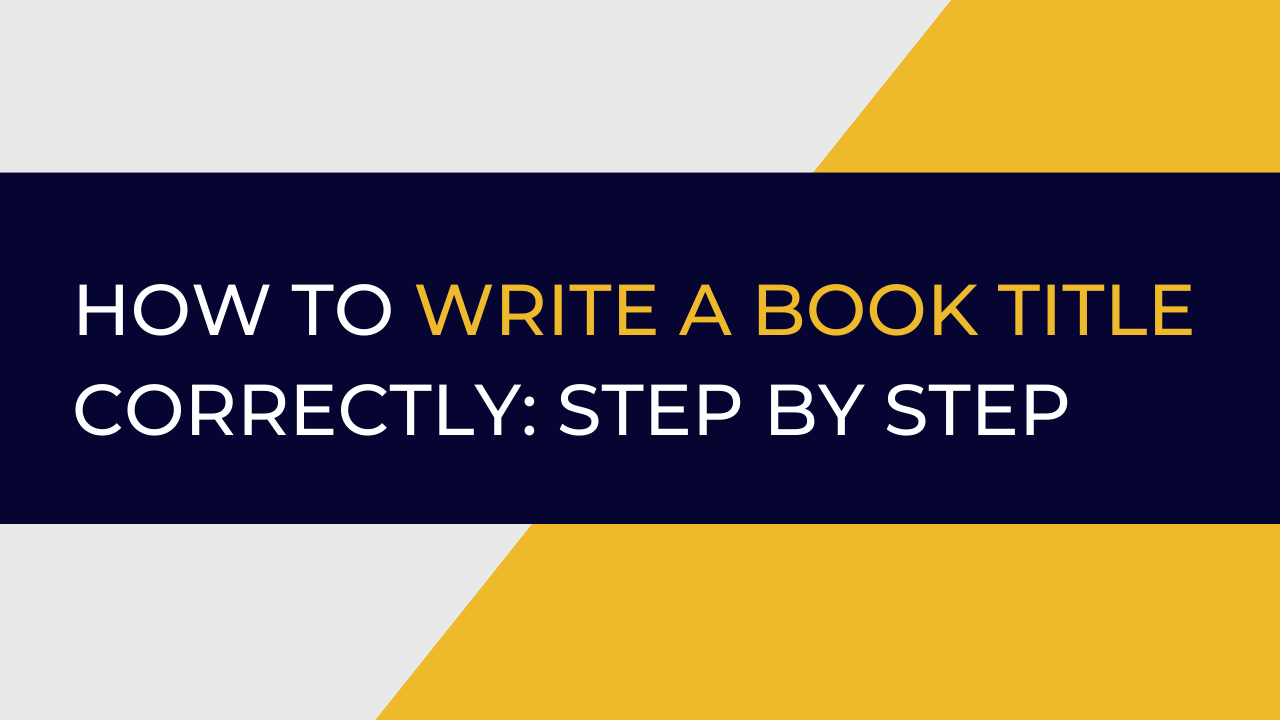

-4.png?width=352&name=SERVICES%20IMAGES%20(2)-4.png)

